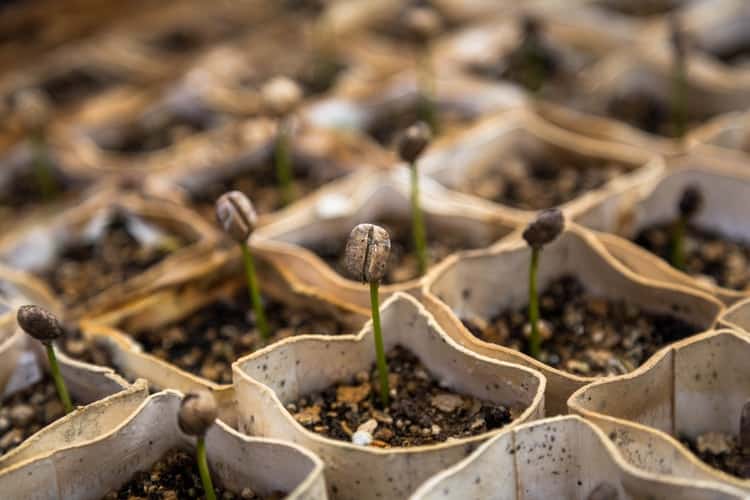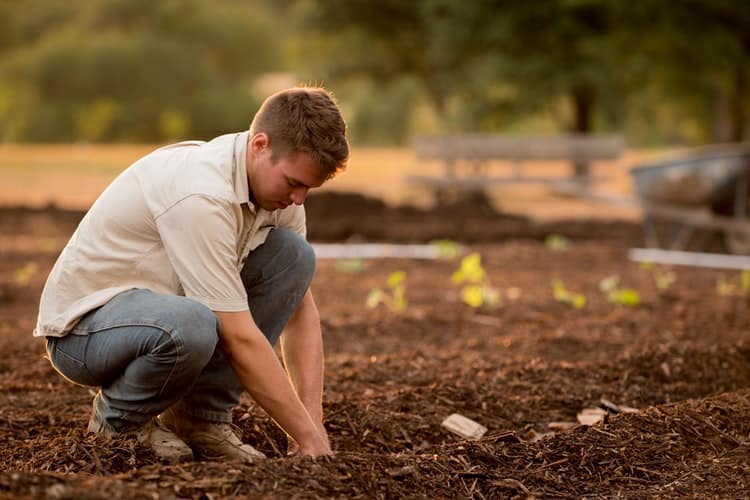Building your own garden from scratch can be an intimidating experience. The truth of the matter is, different plants behave and grow in different ways. And the same goes for their seeds. There will never be one guaranteed way of growing a plant from a seed that can be applied to every type of plant.
The biggest mistake most people make is using the wrong number of seeds to grow a plant. Here’s a quick guide to know how many seeds you’ll need to grow a plant.
Factors for How Many Seeds Are Needed to Grow a Plant
To successfully grow a plant, you’ll need to use 2 to 3 seeds to be safe. If you’re using large seeds, then 1 is often enough.
But there are factors to consider. Some include the seed’s germination behavior, the soil, the spacing, and not just the size. These affect the amount of seed you’ll need to use in order for a plant to grow.
Below is a list of the factors that affect the amount of seeds you’ll need to grow a plant.
- Research seed germination
- Consider the size of the seeds
- Determine water volume
- Remove duds by overseeding
- Add space between plants
- Place between seeds

Research Seed Germination
The amount of seeds you need to be able to grow a plant will depend on the seed’s germination behavior. A seed’s germination is simply the time it takes and the factors that are involved for a seed to sprout.
For example, asparagus seeds are more likely to sprout within a soil temperature of 50 to 70 degrees Fahrenheit. If you can guarantee a soil temperature around this number, you’ll only need around 2 to 3 seeds per pot or hole for a plant to grow.
You need to look into the type of seed you’re planning to use and the germination factors you need to consider for a better chance of growth.
Consider the Size of the Seeds
Again, seeds act differently. And a key factor to consider when figuring out how many seeds you’ll need to produce a plant, you’ll need to consider the size.
Small seeds: For smaller sized seeds, it is generally agreed upon that you’ll only need 2-3 seeds per hole or pot. You don’t want to overcrowd the soil with anything more.
With 2 to 3 seeds, you’ll have a better chance of getting a sprout. For a better chance of success, keep the seeds near the surface of the soil.
Large seeds: For larger seeds, one seed is enough. You need to make sure there’s enough space between each seed to sprout. It should be deep enough in the soil for its sprout to thrive. It should also be close enough to the surface that it can still absorblight.
Determine Water Volume
For seeds to germinate, they need to absorb enough water to be triggered to sprout. Different seeds need to absorb different volumes of water.
There are some seeds such as radish and squash seeds that do not need a lot of water to begin to sprout. On the other hand, there are seeds such as nuts, with thicker coats. If you scrape off layers of this thick coat, one seed is enough to sprout in a short period of time.
If you want better sprouting results, you can create the perfect environment for your seeds to sprout. Do this before you introduce them to the soil environment. Put your seeds on a damp kitchen towel, under good lighting, and in a warm environment.
For even higher chances of sprouting, have a specific temperature for the space you’ll be leaving your seeds on. Learn what temperature your seeds need to be in to be able to sprout.
Once planted, you can better control the water volume through even watering with a soaker hose. Make sure you have a hole in the bottom of the pot! You can easily drill a hole in your ceramic pot or clay pot.
Remove Duds by Overseeding
When you add more seeds than your desired amount of plants, this is overseeding. And this is an important part of the process if you want a desired amount of healthy growing plants in the future. This is what you need to know.
Seeds do not grow at the same rate as one another, even if they come from the same plant. Some seeds will be distinguished as ‘duds’. This means their rate of growth will be significantly slower than other seed sprouts. They will not survive because they are not as healthy as the rest.
You need to add at least 2 to 3 seeds per pot or hole to get the best chance of growing a strong and healthy sprout. You want sprouts that can survive weathering and other challenges they’ll face as they grow.

Overseeding will guarantee that you will be able to choose the strongest of plants. This gives you a better chance of having with the number of plants you initially wanted to grow.
Add Space Between Plants
It doesn’t matter how healthy your soil is, how healthy your seeds are, or how good the environment of your garden is: if your plants grow too close together, they will not survive. This is because plants need a significant amount of nutrients and water from the soil they are in, to grow.
If there are too many plants close together, their roots will constantly be fighting to absorb the nutrients and water. There will not be enough healthy soil for all the plants to grow at their fullest potential.
Make sure you have plenty of soil in your garden bed or planting area, and leave plenty of space between your plantings.
Place Space Between Seeds
If the seeds are positioned too close together, they may not be able to absorb enough water to sprout. This is why it is important to also avoid putting too many seeds, too close to each other. Stick with 2 to 3 seeds in one spot. And give each spot room for growth.
For better sprouting results, you can choose to use different pots for each group of 2 to 3 seeds. This will at least give each plant the best chances for growing into healthy and strong plants that you can eventually move to the garden.
Remember, the more nutrition your plant gets, the stronger the plants are. Therefore the stronger they’ll be in order to survive the weathering they’ll experience when you move them into your garden.
[lyte id=u4DRfPMd7yQ&ab_]
Conclusion
In conclusion, the most important part of understanding how many seeds you need, in order to grow a plant, is to fully understand the type of seed you’re using.
If you want to avoid wasting a significant amount of soil, time, and money, then you need to guarantee that your seeds are growing at the right environment and conditions. In general, the rule is to use 2 to 3 seeds for every plant you want to grow. And for larger seeds, one is enough.